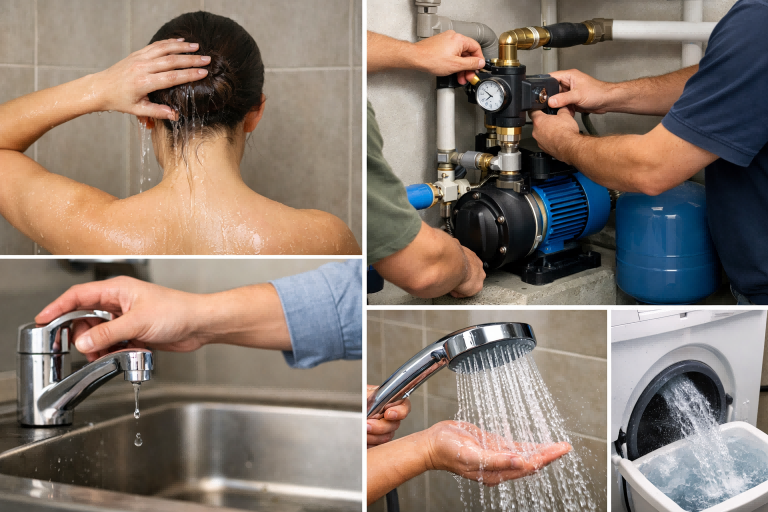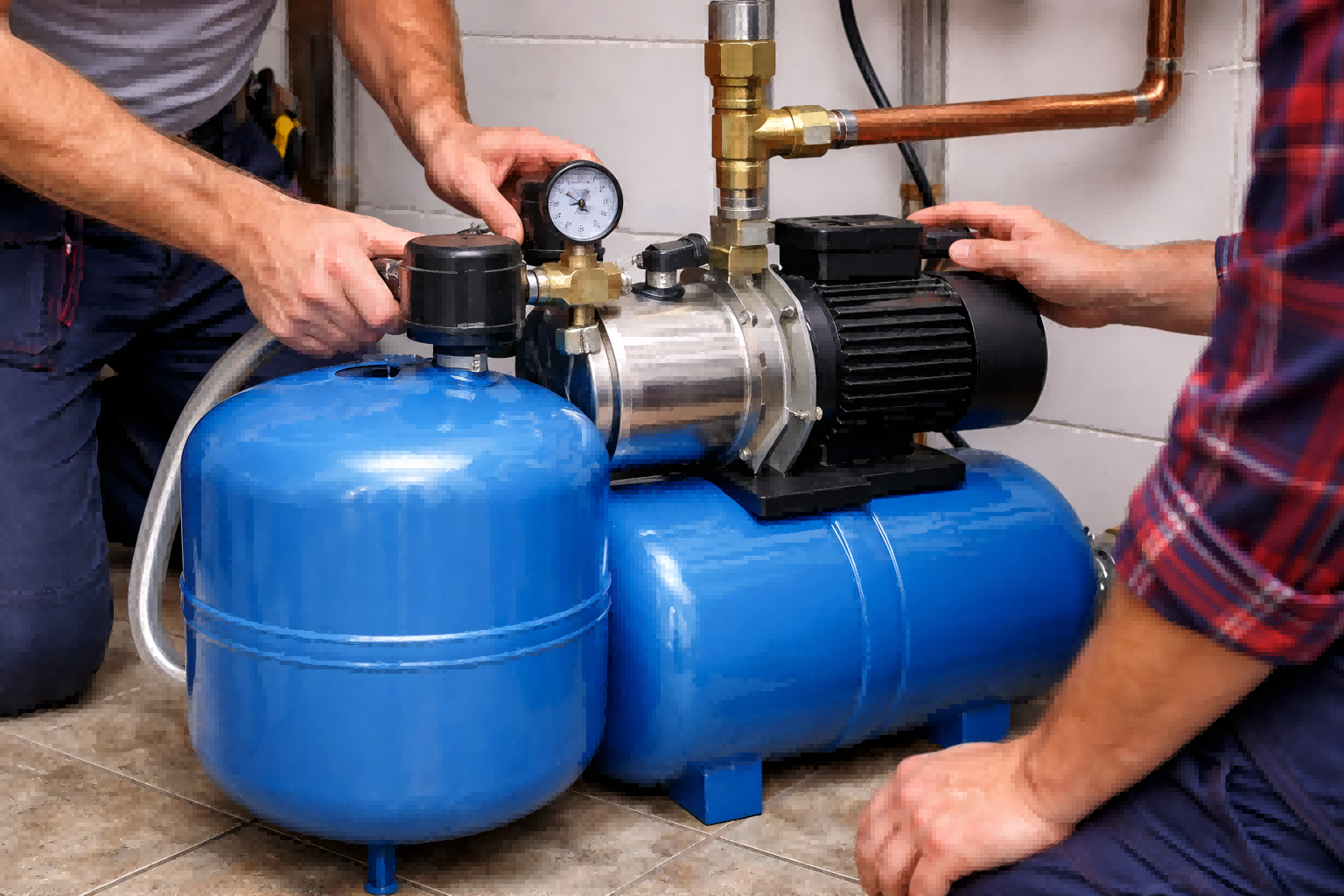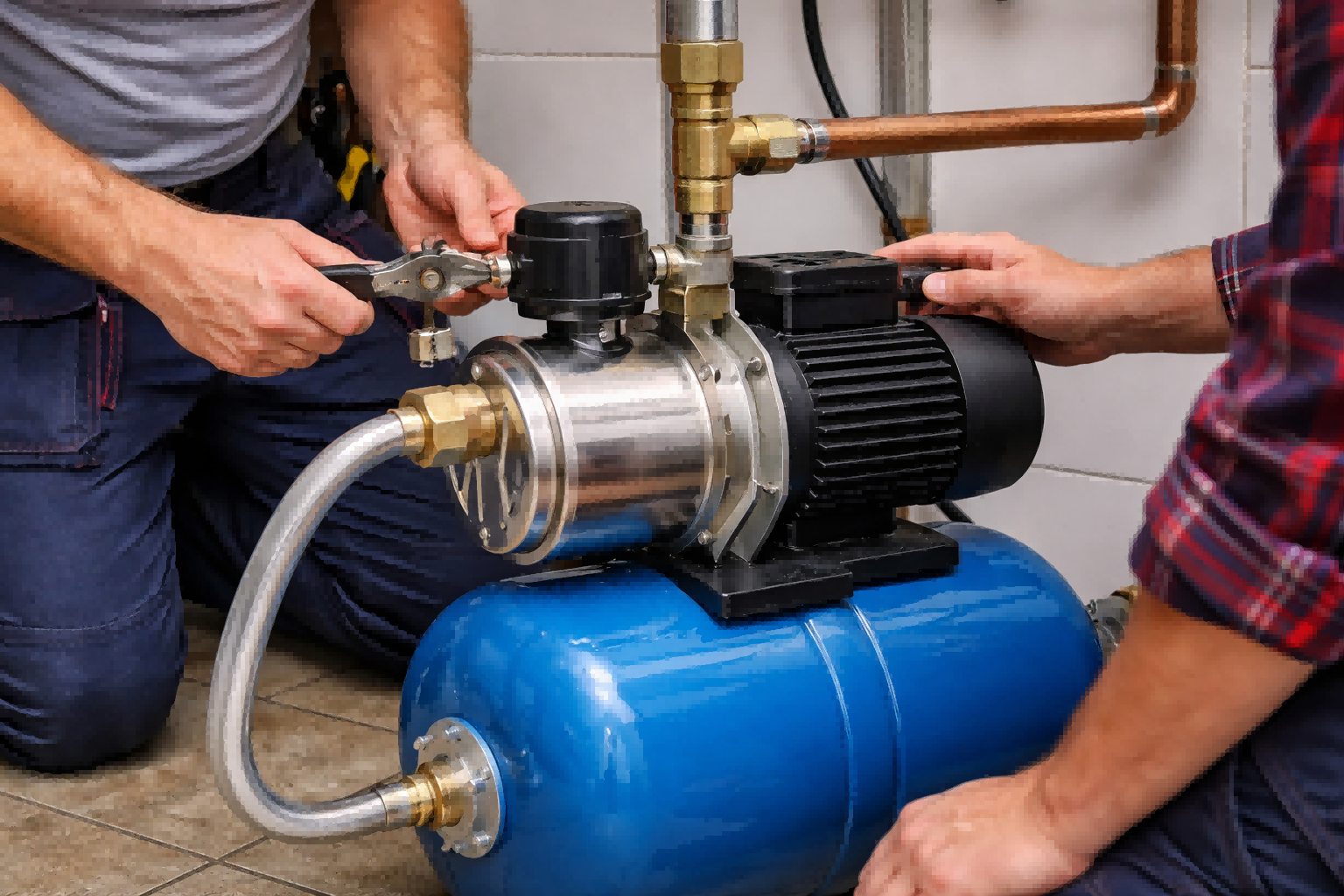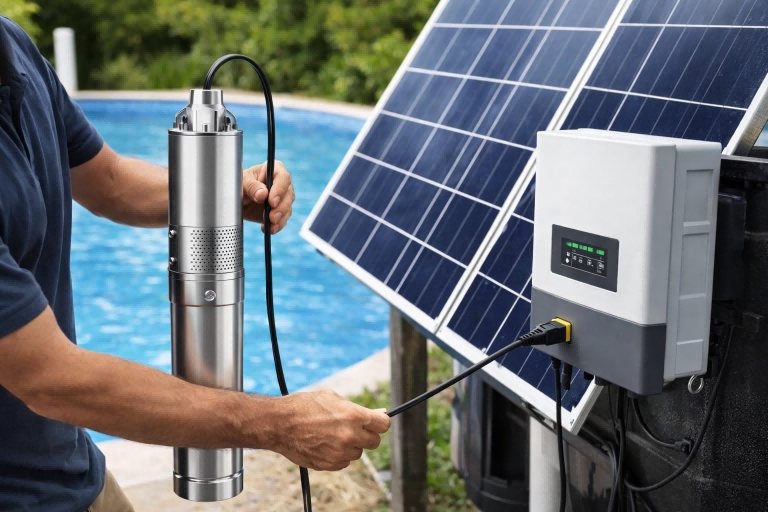Struggling with low water pressure or worried about system downtime?
A properly configured pump system can solve these issues, but the term "twin pump" can be confusing.
It's not a single product, but a concept that applies to different technologies for boosting both pressure and reliability.
This guide clarifies what a twin pump is and helps you choose the right solution.
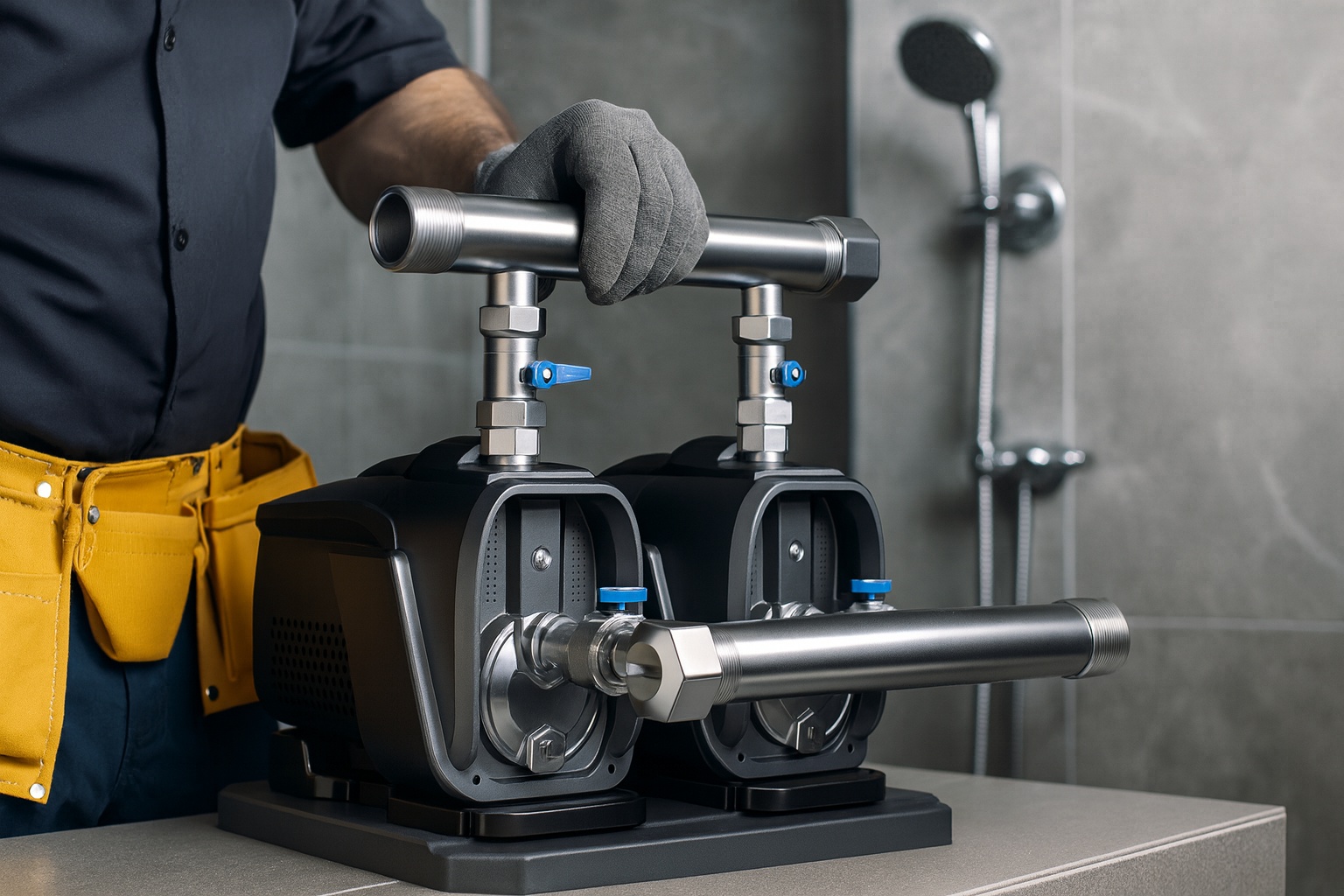
Understanding what a "twin pump" really means is crucial for specifying the correct equipment for a job.
The term can refer to several distinct configurations, each designed to solve a different problem.
From boosting hot and cold water in a home to ensuring uninterrupted water supply in a large commercial building, the right "twin" solution provides enhanced performance, efficiency, and peace of mind.
This article will break down the different types of twin pumps, their applications, and the key features of modern intelligent systems.
Understanding the Core Concepts: What Defines a "Twin Pump"?
Are you confused by the different meanings of "twin pump"?
You might hear it used for shower pumps, industrial systems, or specialized equipment.
Essentially, "twin pump" describes a setup with two key working components designed to work together.
This can mean two impellers in one casing or two separate pumps linked by a controller.
Each configuration offers unique benefits for specific applications.
The term "twin pump" is a broad category, not a single type of device.
Understanding the distinctions is the first step to selecting the right technology for your needs.
It's important to look beyond the name and analyze the underlying mechanics and purpose of the system.
Whether you need to balance water temperatures, increase flow rate, or guarantee a backup, there is a twin pump configuration designed for the task.
Key Twin Pump Categories
At a high level, we can group these systems into three main categories.
Each one addresses a different set of challenges in fluid dynamics and system reliability.
| Pump Category | Primary Function | Common Application | Key Characteristic |
|---|---|---|---|
| Twin Impeller Pump | Balances hot and cold water pressure | Residential showers, taps, and whole-house systems. | Two impellers within a single pump casing, one for hot and one for cold. |
| Twin Pump System | Provides higher flow or system redundancy | Commercial buildings, irrigation, industrial processes. | Two separate pumps connected via manifolds and a smart controller. |
| Twin Screw Pump | Moves viscous or sensitive fluids gently | Food processing, pharmaceuticals, chemical industries. | Two intermeshing screws that move fluid axially. A positive displacement pump. |
Twin Impeller Pumps: For Balanced Pressure
This is the most common type found in residential settings.
Its main purpose is to boost both the hot and cold water supplies simultaneously to a shower or entire bathroom.
This is crucial for mixer taps and showers, where a pressure imbalance can lead to temperature fluctuations or poor performance.
A single casing houses two separate impellers, ensuring that both hot and cold feeds receive an equal boost.
Twin Pump Systems: For Power and Reliability
This configuration moves into the commercial and high-demand residential sphere.
It involves connecting two individual pumps to work in unison.
These systems are managed by an intelligent controller and can be set up in two primary modes.
- Duty/Assist Mode: Both pumps run together to meet peak flow demands that a single pump cannot handle.
- Duty/Standby Mode: One pump (the duty pump) handles the normal load, while the second (the standby pump) remains inactive, ready to take over instantly if the primary pump fails.
Modern systems automatically alternate between the two pumps to ensure even wear and prevent the standby pump from seizing due to long periods of inactivity.
This approach dramatically increases system reliability and simplifies maintenance.
Twin Screw Pumps: A Specialized Solution
This type is distinct from the centrifugal pumps discussed above.
Twin screw pumps are positive displacement pumps used in industrial and sanitary applications.
They are designed to handle high-viscosity fluids, abrasive materials, or products with entrained air and large solids, such as in food production (e.g., salsa, yogurt) or pharmaceuticals.
Their gentle, low-pulsation action moves the product without causing damage.
While they are technically "twin" pumps due to the two screws, their application is highly specialized and different from water pressure boosting.
The "Twin Impeller" Design: Balancing Hot and Cold Water
Is the water flow in your shower little more than a trickle?
Does the temperature fluctuate wildly when someone else turns on a tap?
A twin impeller pump is designed to solve this exact problem.
It boosts both hot and cold water supplies independently but equally, ensuring a perfectly balanced and powerful flow for a comfortable and safe shower experience.
For gravity-fed systems, a twin impeller pump is often the ideal solution.
It addresses the common issue where hot and cold water pressures are unequal, leading to a frustrating user experience at the mixer tap.
By having dedicated impellers for each supply within one unit, it provides a simple, all-in-one fix for weak and imbalanced water flow in homes and apartments.
Single vs. Twin Impeller: What's the Difference?
The fundamental difference lies in the number of impellers and the water supplies they serve.
-
Single Impeller Pump: This pump has one impeller and is designed to boost a single water line—either hot or cold, but not both. It's often used when the cold water is from the high-pressure mains, and only the gravity-fed hot water needs a boost to match it.
-
Twin Impeller Pump: This pump has two impellers in one body. One boosts the hot water, and the other boosts the cold water. This is essential for providing balanced pressure from both supplies to a mixer shower or tap.
Choosing Between a Single or Twin Impeller Pump
The decision comes down to a simple assessment of your current system.
-
Measure Your Flow Rate: First, check the flow rate at the outlets you want to improve. If it's less than 10 liters per minute, you will likely benefit from a pump. This measurement will tell you if one or both supplies are underperforming.
-
Identify the Problem: Is only the hot water weak, while the cold is strong (common in systems with mains-fed cold water)? If so, a single impeller pump on the hot line might be sufficient. If both hot and cold are gravity-fed and have low pressure, a twin impeller pump is the correct choice to ensure a balanced output.
-
Consider the Head Situation: Determine if you have a positive or negative head installation. A positive head exists when there is a natural flow of water (more than 2 liters/minute) to the pump. If the outlet is above the water tank or the flow is a bare trickle, you have a negative head situation and will need a "universal" or negative head pump, which is designed to suck water to the outlet.
-
Special Cases for Single Pumps: In some scenarios, two single impeller pumps can be used instead of one twin pump. This is common when the hot and cold water pipes are located too far apart to be conveniently connected to a single twin pump unit. In this case, one pump is installed near the hot water cylinder and the other near the cold water tank. It's crucial that both single pumps have the same pressure (bar) rating to maintain a balanced flow.
The "Twin Pump" Configuration: Redundancy and Enhanced Flow
Are you managing a system where a water supply failure is not an option, like in a hotel, hospital, or high-rise apartment building?
Or do you simply need more water flow than one pump can deliver?
A twin pump configuration, where two separate pumps are linked, is the professional solution for these high-stakes scenarios.
It provides both exceptional power and critical backup reliability through intelligent, automated control.
This type of system is the backbone of modern commercial and large-scale residential water management.
By using two pumps in a coordinated manner, facility managers can ensure an uninterrupted water supply, meet high peak demands, and extend the operational life of the equipment.
It's a smart investment in both performance and long-term operational security.
How Intelligent Twin Pump Systems Work
A twin pump configuration consists of two standard pumps, a common baseplate, intake and outlet manifolds, and a smart controller that acts as the brain of the system.
This controller allows the pumps to operate in one of two modes.
Mode 1: Duty/Standby for Ultimate Reliability
This is the default mode for applications where reliability is paramount.
- Operation: One pump is designated as the "duty" pump and handles 100% of the normal water demand. The second "standby" pump remains idle but is ready to start instantly.
- Failover: If the duty pump experiences a fault (e.g., motor failure, blockage), the controller automatically deactivates it and activates the standby pump. This ensures the water supply continues without interruption.
- Alternation: To ensure both pumps are always ready to run and to equalize wear and tear, the controller will automatically alternate which pump is in "duty" mode. This can be based on a set runtime (e.g., every 24 hours of operation) or a certain number of start/stop cycles. This simple feature drastically increases the lifespan and reliability of the entire system.
Mode 2: Duty/Assist for Maximum Flow
This mode is used when the primary goal is to meet a water demand that exceeds the capacity of a single pump.
- Operation: One pump acts as the primary pump and handles the regular flow rate.
- Assist Function: When the system detects a demand for water that is higher than what the primary pump can supply (e.g., during peak morning hours in a hotel), the controller activates the second pump.
- Combined Power: The two pumps work in parallel, combining their flow rates to meet the peak demand. Once the demand subsides, the second pump is deactivated, saving energy.
- Alternation: Like in standby mode, the roles of primary and assist pump are regularly alternated to ensure even usage.
Modern smart systems, often using Variable Frequency Drives (VFDs), enhance this functionality even further.
They can precisely match motor speed to demand, offering significant energy savings and even quieter operation.
Remote monitoring via WiFi is also becoming a standard feature, allowing managers to check system status and make adjustments from a smartphone.
When Do You Need a Twin Pump System?
Is a standard single pump not enough for your project?
Are you facing demands for high pressure, high flow rates, or absolute operational reliability?
A twin-impeller or twin-pump system is likely the answer.
Making the right choice depends on a clear analysis of your application's needs, from simple home showers to complex industrial processes.
Choosing between a single pump and a twin configuration isn't just about power; it's about matching the technology to the task.
For a homeowner, the choice might be driven by the desire for a better shower.
For an engineer designing a system for a large building, the decision is based on ensuring hydraulic stability, meeting fire codes, and preventing costly downtime.
Let's break down the key factors to consider.
Core Application Assessment
The first step is to define the primary goal of your pump system.
-
Residential Pressure Balancing: If the goal is simply to balance hot and cold water pressure for a mixer shower in a gravity-fed system, a twin-impeller pump is the most direct and cost-effective solution.
-
High-Volume Residential or Light Commercial: For large homes with multiple bathrooms, extensive garden irrigation, or small commercial properties, a twin-pump system in "duty/assist" mode may be necessary to meet peak water demand without suffering pressure drops.
-
Mission-Critical Commercial/Industrial: For high-rise buildings, hotels, hospitals, data centers (for cooling), and industrial processes where a loss of water pressure is unacceptable, a twin-pump system in "duty/standby" mode is essential for redundancy and reliability.
Technical Performance Requirements
Once you know the application, you need to quantify the performance needed.
1. Calculate Flow Rate (Q):
Determine the total required flow rate in liters per minute (LPM) or cubic meters per hour (m³/h).
Sum the peak demand of all outlets that could be running simultaneously.
2. Calculate Head Pressure (H):
"Head" is the height the pump must lift the water, plus any pressure losses from friction in the pipes.
This is a critical calculation, especially for tall buildings or long-distance irrigation.
High-head applications often benefit from twin-pump systems.
| Application Scenario | Typical Requirement | Recommended Solution |
|---|---|---|
| Single shower, weak flow | Balance hot/cold, add ~1.5-3.0 bar | Twin Impeller Pump |
| Large house, 3+ bathrooms | High flow during peak use | Twin Pump System (Duty/Assist) |
| 20-story apartment building | High head, constant pressure, 100% uptime | Twin Pump System (Duty/Standby) with VFD |
| Long-distance farm irrigation | High head against friction | Twin Pump System (Duty/Assist) |
Advanced System Intelligence
Modern VFD-driven twin pump systems offer intelligent features that provide immense value for larger installations.
A comprehensive protection system is one of the most important.
Look for systems that guard against a wide range of faults, including:
- Dry-running (water shortage)
- Overheating of the motor or electronics
- Voltage fluctuations (over/under voltage)
- Pump stalls or blockages
- Sensor failures
- Freezing in cold climates
A system that can self-diagnose and provide clear alerts for these issues saves significant time and money on maintenance and prevents catastrophic failures.
Conclusion
A "twin pump" can refer to a twin-impeller unit for balancing home water pressure or a robust twin-pump system for commercial-grade power and reliability.
Understanding your specific needs is key to choosing correctly.
Frequently Asked Questions
What is the difference between a single and twin shower pump?
A single pump boosts one water supply (hot or cold). A twin pump has two impellers to boost both hot and cold supplies simultaneously, ensuring balanced pressure for mixer showers.
Do I need a twin or single pump?
If both your hot and cold water have low pressure, you need a twin pump. If only one supply is weak (usually hot), a single pump may be sufficient.
What is a twin impeller pump used for?
It's primarily used in residential, gravity-fed water systems to increase and balance the pressure of both the hot and cold water feeds going to a mixer tap or shower.
Can you pump hot and cold water with one pump?
Yes, a twin impeller pump is specifically designed for this purpose. It has separate chambers and impellers for the hot and cold water lines within a single unit.
What does duty standby mean on a pump?
In a twin pump system, it means one pump operates (duty) while the second is on standby as a backup. The system automatically switches to the standby pump if the duty pump fails.
What is a twin screw pump?
A twin screw pump is a positive displacement pump used in industries to move thick or sensitive fluids like food products. It uses two intermeshing screws, not impellers.


